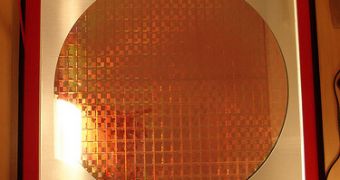AMD is the first to embrace DirectX 11, the successor of DX 10.1 with a graphics processor unveiled at COMPUTEX 2009, Taipei. The next generation of Microsoft's graphics technology will be made available not only as an integral part of Windows 7, but also for Windows Vista, as a standalone download. However, backward compatibility stops with Vista. Just as DirectX 10, version 11 will not be offered for Windows XP. AMD is working to deliver the first DirectX-capable graphics cards in time for the availability of Windows 7, which has been confirmed for October 22, 2009.
Richard Huddy, Sr. manager, Developer Relations at AMD, explained that there were three main pillars of impact associated with DirectX 11. Owners of select AMD graphics cards can already see the advantages of tessellation, and the superior quality it delivers, in combination with DX10.1, for the time being.
“The tessellator represents a natural next step in gaming hardware (in fact the Xbox 360 graphics chip that AMD designed already has a tessellator, and AMD graphics hardware has featured tessellator technology starting with the ATI Radeon HD 2000 series right up to the latest ATI Radeon HD 4000 series cards today).” Huddy stated.
But of course, advances in Windows graphics technology don't stop with tessellation. Compute shaders are also evolving to the next level with DirectX 11. “The second new beast in the menagerie is the excitingly named “Compute Shader”. It allows games programmers to treat the GPU in a much less graphics-oriented way; indeed, they can almost treat it like a highly parallel CPU,” Huddy added.
The third area of impact for DirectX 11 is performance. Huddy indicated that DX11 was tested extensively and that the technology outperformed previous versions. More specifically, DirectX 11 makes better use of multiple CPU core architectures, a boost in efficiency that ultimately translates in higher frame rates and detail-rich realistic gaming experiences.
“This time around I hope it’s abundantly clear – I predict that: we’ll see higher frame rates because the way DirectX 11 uses CPUs will be more efficient. We’ll see higher frame rates because games developers will be able to use our GPUs more like CPUs. We’ll see smoother, more realistic characters and more realistic terrain as we move away from blocky polygonal representations to the kind that are used in movies. And a side-benefit, that will help PC gaming generally, is that the new version is easier to use, so it will help to keep game development costs down,” Huddy said.

 14 DAY TRIAL //
14 DAY TRIAL //